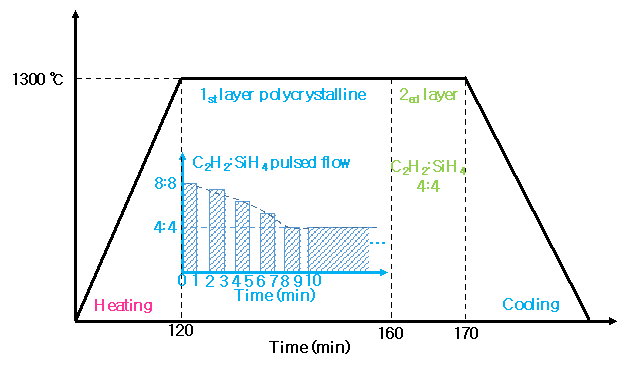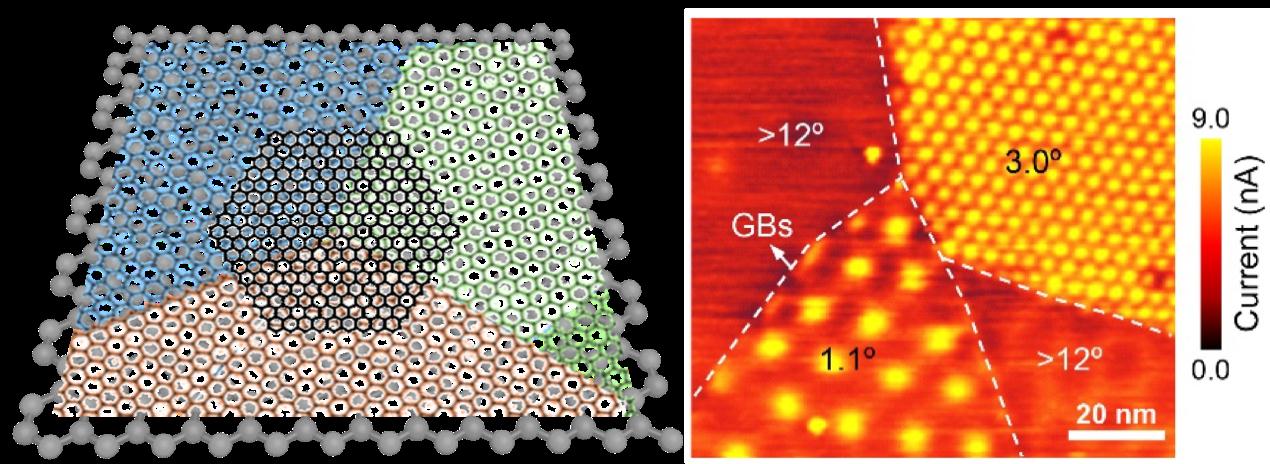Low-angle twisted bilayer graphene has been successfully grown on h-BN
Date:03-12-2020 | 【Print】 【close】
Varying the interlayer twist angle to provide an effective strategy to tune electronic properties of van der Waals structures. Recent experiments have revealed how the interlayer conductivity of 2-D van der Waals structures such as graphene/graphene or graphene/graphite junctions decreased monotonically with an increasing twist angle. Researchers can explain such monotonic angle-dependent interlayer conductivity using a phonon-mediated interlayer transport mechanism. Aside from interlayer conductivity, the vertical conductivity can be probed using conductance atomic force microscopy (c-AFM), where the results show similar trends for diverse 2-D materials with a large twist system. Recent studies on low-angle twisted bilayer graphene (TBG) had shown unconventional electronic properties such as superconductivity, correlated insulators and spontaneous ferromagnetism. It is therefore scientifically intriguing to investigate the vertical conductivity of TBG and understand how it evolves with the twist angle. Most of the TBG samples are prepared through micro-mechanical exfoliation and further manual stacking. To direct prepare bilayer graphene with a small twist angle by chemical vapor deposition (CVD) method is an important issue that needs to be solved.
Recently, a team of scientists from SIMIT (Shanghai Institute of Microsystem and Information Technology, Chinese Academy of Sciences) successfully synthesized TBG on h-BN by CVD. During the experiments, the researchers used a thick hexagonal boron nitride (h-BN) flake as the substrate and grew bilayer graphene using chemical vapor deposition. In these samples, the bottom layer of graphene formed a continuous polycrystalline film, while the top-layer of graphene remained a single-crystal graphene island. This unique sample structure allowed them to investigate a large number of twisted bilayer graphene domains with a wide range of twist angles. Joint with the scientists from Tsinghua University and University of Science and Technology Beijing, the team applied a constant bias voltage between the conductive probe and the film to continuously monitor the current in the setup during conductive AFM measurements. With the decreasing twist angle, the scientists noted a drop in vertical conductivity of twisted bilayer graphene, a distinctly different feature from the monotonic angle dependent conductivity observed in previous report (Nature Nanotechnology 11, 752–757(2016)). When the twist angle decreased from 60 degrees to five degrees, the conductivity of TBG gradually increased, consistent with previous reports. When the twist angle decreased below five degrees, however, the team noted the unusual reduction in conductivity. The scientists revealed the mechanism behind the abnormal behavior using density functional theory (DFT) calculations and scanning tunneling microscopy (STM), and credited the outcome to the unusual reduction in average carrier density originating from local atomic reconstructions. Atomic reconstruction can occur due to the interplay between the van der Waals interaction energy and the elastic energy at the interface, leading to intriguing structures.
The findings emphasize the influence of local reconstruction on vertical conductivity in 2-D interfaces. The work offers guidance to optimize the electric performance of twisted 2-D van der Waals structures in the field of electronics.
Link: https://advances.sciencemag.org/content/6/47/eabc5555

Figure 1. Details for the growth of TBG on h-BN

Figure 2. Schematic diagram of TBG on h-BN surface and a typical current image measured on bilayer graphene showing domains with different twist angles under a bias of 10 mV.
| 附件下载: |